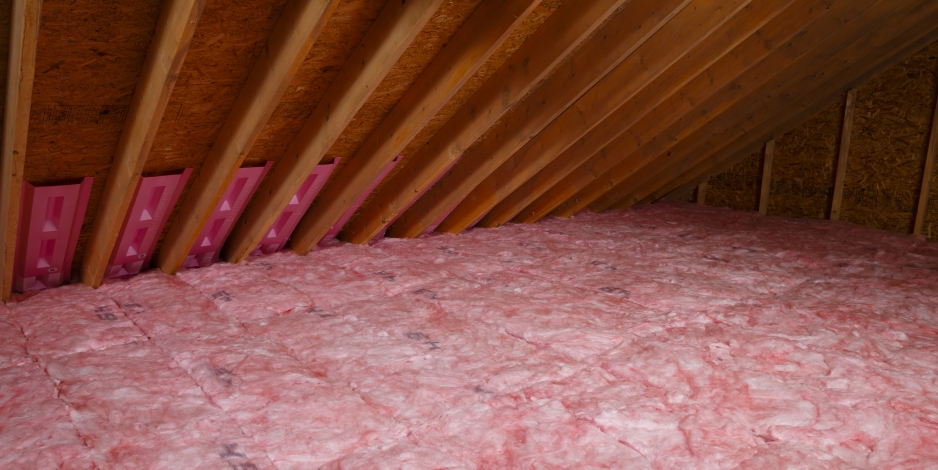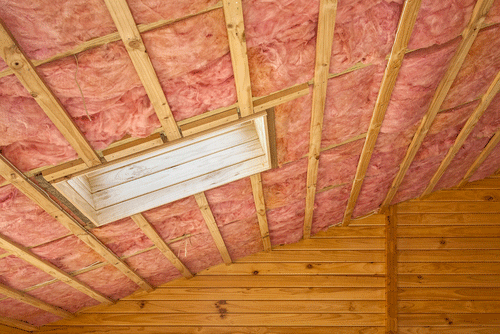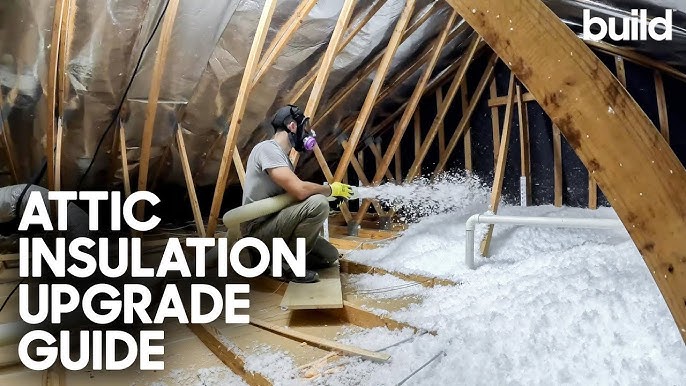Why Attic Insulation DFW is Essential for Energy Efficiency in Dallas-Fort Worth
Why Attic Insulation DFW is Essential for Energy Efficiency in Dallas-Fort Worth
Blog Article
Discover the Various Kinds Of Attic Insulation and Their Unique Advantages for Your Home's Power Performance

Fiberglass Insulation
Fiberglass insulation is among one of the most commonly used materials for attic insulation due to its excellent thermal performance and cost-effectiveness. Composed of tiny glass fibers, this material efficiently catches air, developing a protecting barrier that helps preserve consistent indoor temperatures. Its high R-value per inch makes it especially efficient at resisting warm transfer, which is vital for power conservation in homes.
Installment of fiberglass insulation is relatively straightforward, often offered in batts or loose-fill forms, suiting different attic room configurations. Furthermore, it is non-combustible and immune to dampness, reducing the risk of mold development. This durability adds to its long life, making fiberglass a sensible long-term investment for property owners.
Additionally, fiberglass insulation is usually produced from recycled products, which enhances its eco-friendliness. The material can additionally contribute to soundproofing, decreasing noise transfer between areas. While it is vital to use safety gear during installment to prevent inflammation from the fibers, the general advantages of fiberglass insulation, consisting of energy financial savings and environmental considerations, make it a popular option for improving attic room efficiency and promoting a comfy living setting.
Spray Foam Insulation
Spray foam insulation is a very effective alternative for attic insulation, known for its premium air securing and thermal performance. This innovative insulation product is made up of a blend of isocyanate and polyol material, which, when combined, broadens swiftly to fill up voids and cavities in the attic room space. Its capacity to abide by numerous surface areas makes sure a constant obstacle against air leakages, substantially reducing heat loss throughout colder months and warm gain throughout warmer seasons.
Among the crucial benefits of spray foam insulation is its high R-value per inch, which indicates it offers excellent thermal resistance in a relatively slim application. This is especially advantageous in attics where area is usually limited. In addition, spray foam can aid decrease moisture accumulation, decreasing the risk of mold and mildew and mildew development, which can be harmful to both the framework and interior air quality.
While the preliminary price of spray foam insulation may be higher than traditional alternatives, its long-lasting energy cost savings, combined with enhanced convenience and boosted home worth, make it a worthwhile financial investment for property owners seeking boosted power effectiveness. Attic Insulation DFW. Overall, spray foam insulation stands out as an effective option for maximizing attic room insulation
Cellulose Insulation

Cellulose insulation is a prominent option for attic room insulation, mostly made up of recycled paper items treated with fire resistants. This eco pleasant option is known for its outstanding thermal efficiency, efficiently minimizing heat transfer in both summer and winter months. The thick composition of cellulose allows it to load gaps and gaps in attic spaces, giving a seamless obstacle versus air leakages.
Among the significant advantages of cellulose insulation is its ability to withstand mold and mildew and pests, owing to the fire retardant therapies utilized throughout manufacturing. In addition, it boasts a high R-value per inch, which equates right into premium power efficiency. Home owners can expect reduced heating and cooling costs as a result of enhanced go insulation.
Installment is normally achieved through blowing loosened cellulose into the preferred location, enabling for a reliable and fast process. This technique also minimizes interruption to the existing framework. Moreover, cellulose insulation has a relatively reduced environmental influence, as its manufacturing process uses recycled products, adding to sustainable structure methods.
Rock Woollen Insulation
Amongst the different options for attic room insulation, rock wool, likewise called mineral wool, attracts attention due to its excellent thermal and acoustic efficiency. Made from recycled or all-natural materials, rock wool is produced by thawing rock and spinning it right into fibers, resulting in a product that uses excellent insulation properties.
One of the considerable advantages of rock woollen insulation is its high R-value, which shows its effectiveness in withstanding warm flow. This particular not only enhances energy efficiency but additionally adds to preserving a comfy indoor temperature level year-round. Additionally, rock wool is inherently fireproof, making it a more secure option for homes as it can withstand high temperature levels without melting straight from the source or releasing poisonous fumes.
Furthermore, rock woollen insulation excels in soundproofing capabilities, efficiently decreasing sound transmission between spaces and from outdoors sources. Generally, rock woollen insulation gives a thorough solution for improving power performance, security, and comfort in residential settings.
Radiant Obstacle Insulation
Glowing barrier insulation offers as an efficient service for reducing warm transfer in attics, specifically in warmer climates. This kind of insulation jobs by showing convected heat away from living areas, consequently reducing the quantity of warmth that gets in a home during hot climate - Attic Insulation DFW. Normally made up of a very reflective material, such as light weight aluminum foil, radiant obstacles are installed in attics, encountering the roof covering, where they can obstruct incoming heat from the sunlight
The main advantage of glowing barrier insulation is its capability to lower air conditioning costs. By mirroring warm rather than absorbing it, glowing obstacles can help maintain a much more secure indoor temperature, lowering the workload on air conditioning systems. This performance translates right into reduced power bills and increased comfort for homeowners.
In addition to energy financial savings, glowing barriers can likewise add to improved indoor air top quality. By lowering warm build-up, they help minimize moisture levels, which can protect against mold growth and boost overall air flow. When set up correctly, glowing barrier insulation can be a vital addition to any type of energy-efficient home, making it a worthwhile consideration for house owners aiming to enhance their attic room insulation strategy.
Verdict
In conclusion, recognizing the different kinds of attic room insulation-- fiberglass, spray foam, cellulose, rock woollen, and radiant obstacles-- makes it possible for house owners to make educated choices relating to energy effectiveness. Each insulation kind presents special benefits, such as superior thermal resistance, wetness monitoring, and audio attenuation. By selecting the ideal insulation product, considerable reductions in power expenses can be attained, along with improvements in indoor convenience. Ultimately, the best choice adds to a more sustainable living setting and promotes general power conservation.

In final thought, understanding the various types of attic room insulation-- fiberglass, spray foam, cellulose, rock wool, and glowing obstacles-- enables house owners to make educated decisions regarding energy efficiency.
Report this page